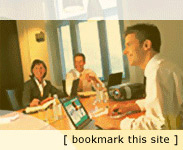 |
 |
 |
| Home | More Articles | Join as a Member! | Post Your Job - Free! | All Translation Agencies |
|
|||||||
|
|
Flemish
Contents: 1. Grammar and Spelling Section One – Grammar and Spelling 1. Gender: Flemish has masculine, feminine and neuter genders. Definite articles are de (masc./fem.) het (neuter) and indefinite article is een (used for all three genders), although both the definite and indefinite articles are used to refer to the English definite article ‘the’. 2. Plurals: The plural can be recognised by the endings 's' or 'en', or if there is an article, 'de'. Sometimes a consonant in the middle of a word is repeated for the plural form, e.g. kop - koppen. Sometimes the plural takes an apostrophe: 1 baby, 2 baby's. There are some words where the plural form is very different to the singular, but there are no strict rules, e.g.: 1 doos, 2 dozen. 3. One letter words: Flemish sometimes uses the one letter word ‘à’, which is used in the same way as French uses it. 4.
Consonant/vowel clusters: ‘sch’ or ‘schr’
are common language 5.
Apostrophe: Flemish sometimes uses apostrophe
–s (‘s) in front of a few words (e.g. ‘s morgens,
‘s werelds, ‘s middags, ‘s Gravenhage, etc). If this
occurs at the beginning of a sentence, the first word
to follow is capitalised e.g. ‘s Morgens, ‘s Werelds,
etc. The genitive form –s is usually attached to the proper noun if it ends on a consonant or muted ‘-e’, as opposed to the English genitive form: e.g. Jans fiets (Jan’s bicycle). (But there are of course exceptions to the rules). If, however, the noun ends on a stressed consonant, apostrophe –s is used instead: e.g. Kitty’s vader (Kitty’s father); if the noun ends on an s-sound, only an apostrophe is used: e.g. Max’ boek (Max’ book). In case of abbreviations, apostrophe –s is used: e.g. KLM’s vluchten (KLM’s flights). Very often, however, the word ‘van’ is used to express the genitive e.g. De fiets van Jan (Jan’s bicycle). This form is interchangeable with the construction with apostrophe –s. Section Two – Punctuation 1.
Spacing: Flemish always has a space AFTER
the following punctuation marks: : ; ! ? 2. Full stops: Full stops are not used at the end of headings, titles, subtitles, addresses, dates, number of pages. Bullet points do not normally have full stops. 3. Speech marks: Speech marks are the same as English ones " ... " 4. Brackets: The first letter inside brackets is not capitalised. 5. Commas: Never use a comma after 'en' (‘and’). 6. Capitalisation: Flemish is similar to English in its use of capitals at the beginning of sentences and for proper names, but it doesn't use capitals as often as English. A summary follows:
Section Three – Measurements and Abbreviations 1. Measurements: The Metric system is used except for computer monitors (inches), inner diameter of pipes/tubes, nautical miles, size of computer disks. Numbers: use decimal comma, and a dot as the thousands separator. Time: 24 hour clock is used (no am/pm). E.g. 13u20 Date: 25/8/05, 25 augustus 2005, 25.8.2005. NB: When date is 1st November 2005 in English, the equivalent in Flemish is 1 november 2005. Always a space between figure and measurement abbreviation. No space before a % symbol: e.g. 50% No space is left before °C, e.g. 30°C. Currency: € 45 / 45 euro 2. Abbreviations: Equivalent abbreviations: N/a =
N.v.t. 1ste /
2de / 3de / 4de Other common abbreviations: a.u.b.
= please Section Four – Hyphenation Flemish sometimes uses a hyphen at the end of a word to connect one or two nouns to the second part of a compond noun in a list of words. These words have the second part of the final compound noun as a common element. A syllable often constitutes a unit of 3 to 4 characters ending with a consonant. Hyphenate after a consonant, and preferably near the beginning of the word. If a syllable ends with a vowel followed by a consonant the hyphenation is after the vowel (e.g. ge-bruik). If there are two consonants, hyphenation is in between (e.g. pakket-ten). Dashes are used; the short ‘N’ dashes (-) are most commonly used. In compounds with figures, letters and symbols, a hyphen should be used: e.g. A4-formaat, 5%-korting, 65-plusser, cd-rom, etc. Section Five – Miscellaneous Peculiarities Usually the first name is written first, followed by the surname. Always uses the 24 hr clock in writing, usually using 'u' as separator, e.g. 10u30. 'ij' and 'y', though representing the same sound, are not interchangeable. 'de', 'het' and 'een' all represent the definite article 'the'. CD-ROM: this is written all lower case in Flemish, e.g. cd-rom. The same applies to pc, dvd, tv, etc. Section Six – Geographic Distribution Dutch is a West Germanic language that is the national language of The Netherlands and, with French, one of the two official languages of Belgium. The official name of the language is Nederlands or Netherlandic. The Netherlandic language, which occurs in both standard and dialectical forms, is spoken by 20 million people in The Netherlands, northern and western Belgium, Suriname and the Netherlands Antilles. Afrikaans, which is a derivative of Netherlandic is one of the official languages of South Africa. In The Netherlands, Netherlandic is also called Hollands (Hollandish) reflecting the fact that the standard language is based largely on the dialect of the old province of Holland. Although speakers of English usually call the Netherlandic of The Netherlands Dutch and the Netherlandic of Belgium Flemish, they are actually the same language. The standard and official language (Algemeen Nederlands - AN) used for public and official purposes -including instructions in schools and universities- is the same in The Netherlands and in Flanders. Although the spoken language exists in a great many varieties, including the local dialects that are used among family, friends and others from the same village, these dialects are only local variations and make the spoken language all the more interesting and vibrant. Flemish and Hollandish do not exist as a language, they are nothing more than local variants in the same way as for instance Austrian or Bavarian. (Based on the Encyclopaedia Britannica) Language
Family Section Seven – Character Set [ ] = Alt key codes
E-mail this article to your colleague! Need more translation jobs? Click here! Translation agencies are welcome to register here - Free! Freelance translators are welcome to register here - Free! |
|
|
Legal Disclaimer Site Map |